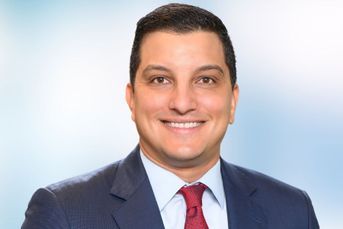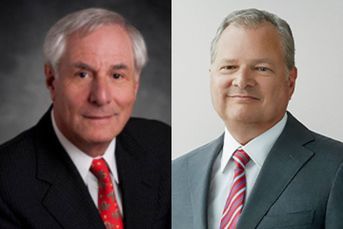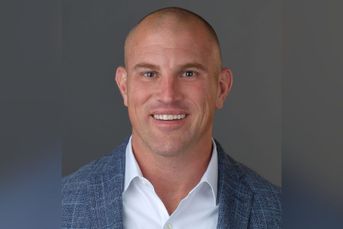Advisers struggle with disputes over asset valuations
A dead-in-the-water limited partnership that just won’t go away is giving an investor and his financial adviser fits…
A dead-in-the-water limited partnership that just won’t go away is giving an investor and his financial adviser fits in a scenario that is playing out with increasing frequency.
The root of the problem is the value of the partnership, the CNL Income & Growth Fund II Ltd., which is stated as $50,000 on the client’s IRA brokerage statement. In reality, the illiquid investment is worth maybe $200 to $300.
Based on the outdated valuation, and with the investor over 80 and therefore required to take a mandatory distribution, the client is on the hook for about $2,000, said the adviser, Rolf Trautsch, president of C&T Financial Services Group Inc.
Adding to the confusion is the fact that the accredited investor sold the partnership to his wife last year for $500. Despite that, it still shows up in the client’s individual retirement account with a value of $50,000 and also appears with a $50,000 value in the wife’s brokerage account.
“DOESN’T MAKE SENSE’
Other illiquid investments, such as nontraded real estate investment trusts, are required to make annual valuations, said Mr. Trautsch, who declined to state his firm’s assets under management or reveal the net worth of his client.
“In this case, that’s all we’re asking for. We ought to have an accurate valuation, and we shouldn’t have one based on the original sale 20 years ago,” Mr. Trautsch said.
“It just doesn’t make sense,” he said.
The custodian for the account is Pershing LLC, Mr. Trautsch said.
“Without knowing who the client is or the asset, Pershing doesn’t have enough information to comment,” said Sandra Kelder, a Pershing spokeswoman.
Such headaches over valuations for advisers and clients holding alternative assets in retirement accounts such as IRAs have become more common since the credit crisis and the financial collapse in 2007 and 2008, according to J.P. Dahdah, chief executive of Vantage Retirement Plans LLC, which administers more than $600 million in retirement plan assets, all of which are alternative assets such as real estate and gold.
“We are seeing way more of these disputes” about an asset’s valuation, Mr. Dahdah said.
“Back in 2005 and 2006, we’d rarely see this type of problem,” he said. “Since then, we’ve seen an increase of 30% to 40% of customers who are now dealing with an asset in some sort of distress and having a tougher time getting its value.”
Vantage is administering between $3 million and $5 million in such distressed assets, Mr. Dahdah said. “You could have 25 clients in one problem asset. [Last] week, we got three more, including a notification of receivership.”
Mr. Dahdah said that there were “several parties” involved in such a dilemma.
“First, from the IRA custodian, administrator or trustee’s perspective, we have a requirement to report to the [Internal Revenue Service] the value of the account,” he said. “But who’s ultimately responsible for obtaining the value of the asset? Most companies, like Vantage, will place the responsibility on the account holder. And if the general partner is not willing to provide a value, the account holder hires a third-party valuation company to do the appraisal.”
According to a 2010 letter from CNL to the limited partners of its Income & Growth Fund II, the strategy returned 109% from April 1992 through March 2010. An original investment of $50,000 would have returned $54,629, according to the letter. Of that, $25,559 was net cash from operations, with the rest coming from capital contributions from the general partner, borrowed money from a related affiliate and proceeds from the sale of assets,
STAKE IN RESTAURANTS
Over its life span, the partnership owned indirect interest in Black-eyed Pea restaurant chain properties in Texas and Colorado, as well as restaurants in California, according to the letter.
“As previously discussed, 2009 was a very challenging year for the restaurant industry, and we anticipate that 2010 will likewise continue to be a difficult year,” wrote James Seneff Jr. and Robert Bourne, the general partners of the fund. According to the letter, the partnership did not pay any distributions in 2009. Mr. Trautsch said that it has not paid distributions in several years.
“We cannot comment on any individual investor’s situation,” said CNL spokesman Mark Tosczak.
“CNL Income & Growth Fund II is a private-equity offering that was open to accredited investors only,” he said. “A small portion of these investors placed their investment through qualified plans, which could, under certain conditions, subject them to required mandatory distributions. The fund expects to solicit consent from its investors for an orderly liquidation no later than December 2013.”
Mr. Dahdah noted that advisers’ holding alternative assets has become somewhat more problematic. Major custodians, such as Schwab Advisor Services, that work with investment advisers have become increasingly leery of holding alternative assets in custody, he said.
Indeed, in 2009, Schwab upset certain registered investment advisers when it said that it would stop accepting new alternative products, close off additional funds into alternatives and no longer hold offshore hedge funds.
Schwab Advisor Services then reversed course in 2010 and reopened its platform to most, if not all, alternative assets.
RIA PUSH-BACK
“Our clients call when they get kicked off systems,” Mr. Dahdah said. “Schwab certainly doesn’t want new business in this asset space. They get a lot of push-back from RIAs who want alternatives [to generate] returns. Schwab is looking to refer business to companies like ours. We’re bringing in $12 million to $15 million a month from other custodian companies.”
Schwab spokeswoman Sarah Gormley declined to comment.
Meanwhile, Mr. Trautsch’s clients are still saddled with limited partnerships with skewed valuations. His client owns two other limited partnerships, and his wife has one in an IRA. “She has the same problem, but not as large an amount” of money, he said.
Instead of dumping the CNL fund on a third party, the client sold the CNL Income & Growth Fund II to his wife with the hope it would revive, Mr. Trautsch said.
However, the transaction may be at fault because of IRS regulations prohibiting the sale of IRA assets between family members. Mr. Trautsch said he was not aware of those regulations, that all the parties involved, including Pershing and CNL, did not object to the sale and, if need be, it can be reversed.
Learn more about reprints and licensing for this article.








